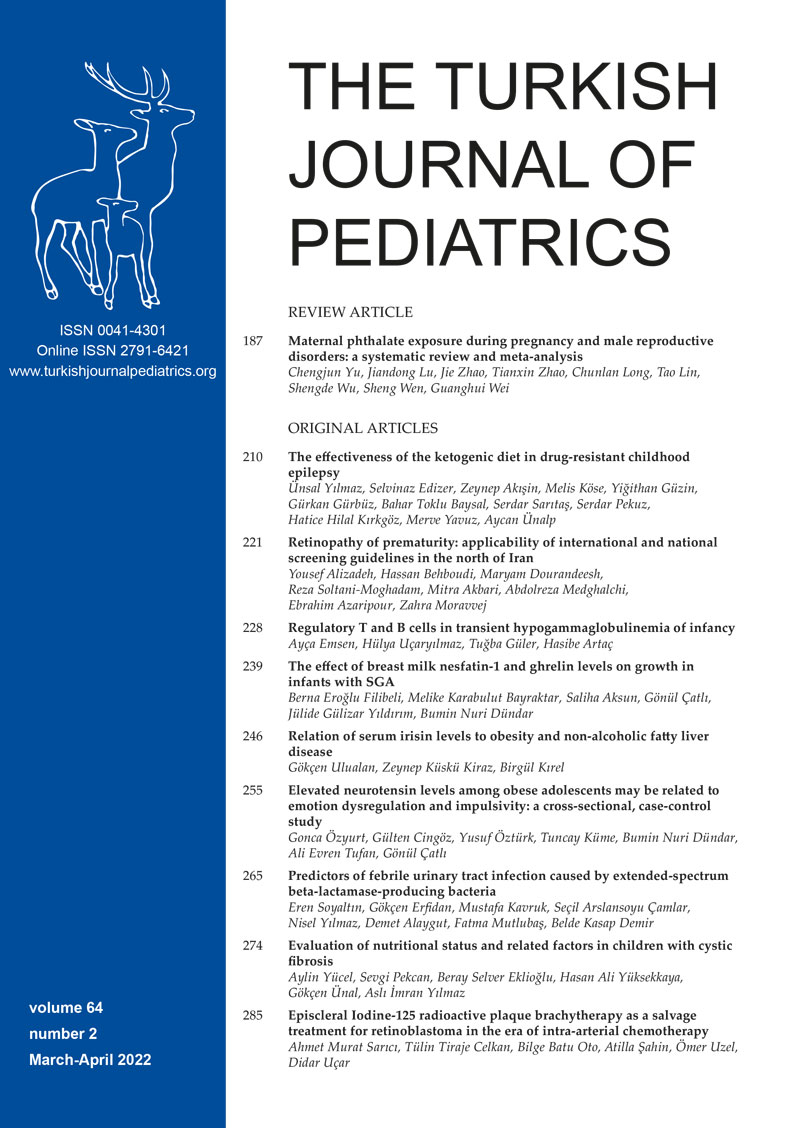Abstract
Background. We aimed to evaluate the predictability of extended-spectrum beta-lactamase (ESBL)-producing bacteria (PB) with inflammation markers and hemogram parameters as neutrophil-lymphocyte-ratio (NLR), platelets-lymphocyte-ratio (PLR) and mean-platelet-volume (MPV) in infants with febrile urinary tract infection until the urine cultures are resulted.
Methods. Infants between 2-24 months hospitalized for the first febrile urinary tract infections were grouped as those infected with ESBL-PB and non-ESBL-PB. The demographic and laboratory data (inflammation markers and hemogram parameters) and the ultrasonographical findings were compared between the two groups.
Results. A total of 232 patients were included in the study. The mean age was 8.82 ± 5.68 (2-23) months and 114 (49%) of them were female. Escherichia coli was the most common isolated bacteria (79%) followed by Klebsiella pneumoniae (15.5%) in urine cultures. There were 88 patients in ESBL-PB infected group and 144 patients in the non-ESBL-PB group. The hematologic parameters such as white blood cell count (WBC) count, NLR, PLR, MPV and procalcitonin (PCT) were similar between the two groups. Only the rate of ultrasonographic abnormalities was significantly higher in infants infected with ESBL-PB (p=0.012). The risk of ESBL-PB positivity in urine cultures increased with age (OR 1.068, 95% CI 1.002-1.139, p=0.045), PCT (OR 1.094, 95% CI 1.011-1.184, p=0.025), and ultrasonographic abnormalities (OR 3.981, 95% CI 1.792-8.845, p=0.001).
Conclusions. Platelet counts, WBC, MPV, NLR, PLR, and PCT were not reliable markers, however having an ultrasonographic abnormality is the most important independent risk factor for prediction of infection with ESBL-PB.
Keywords: extended-spectrum beta-lactamase-producing bacteria, neutrophil-to-lymphocyte ratio, platelet-tolymphocyte ratio, urinary tract infection
Copyright and license
Copyright © 2022 The Author(s). This is an open access article distributed under the Creative Commons Attribution License (CC BY), which permits unrestricted use, distribution, and reproduction in any medium or format, provided the original work is properly cited.














